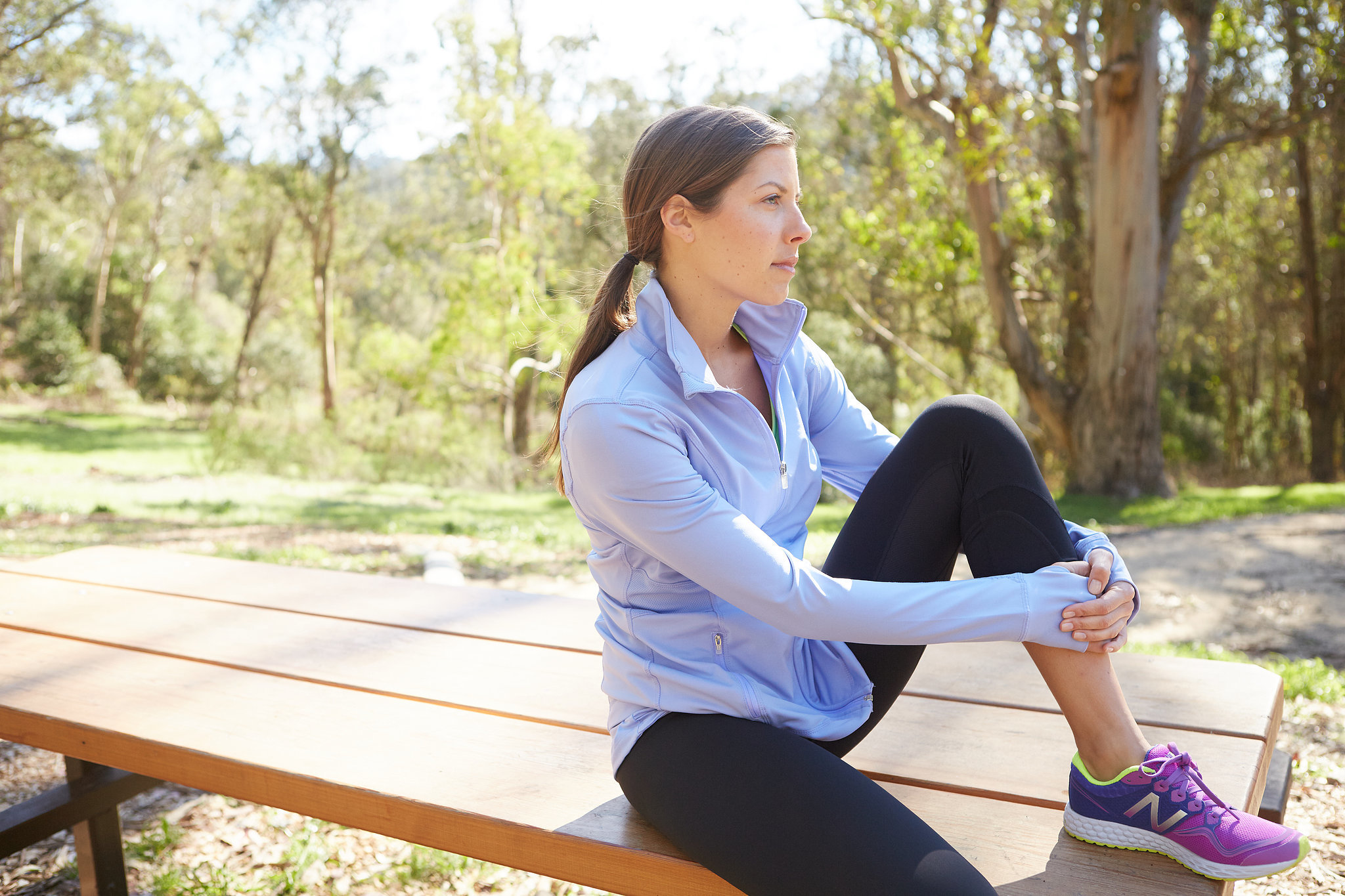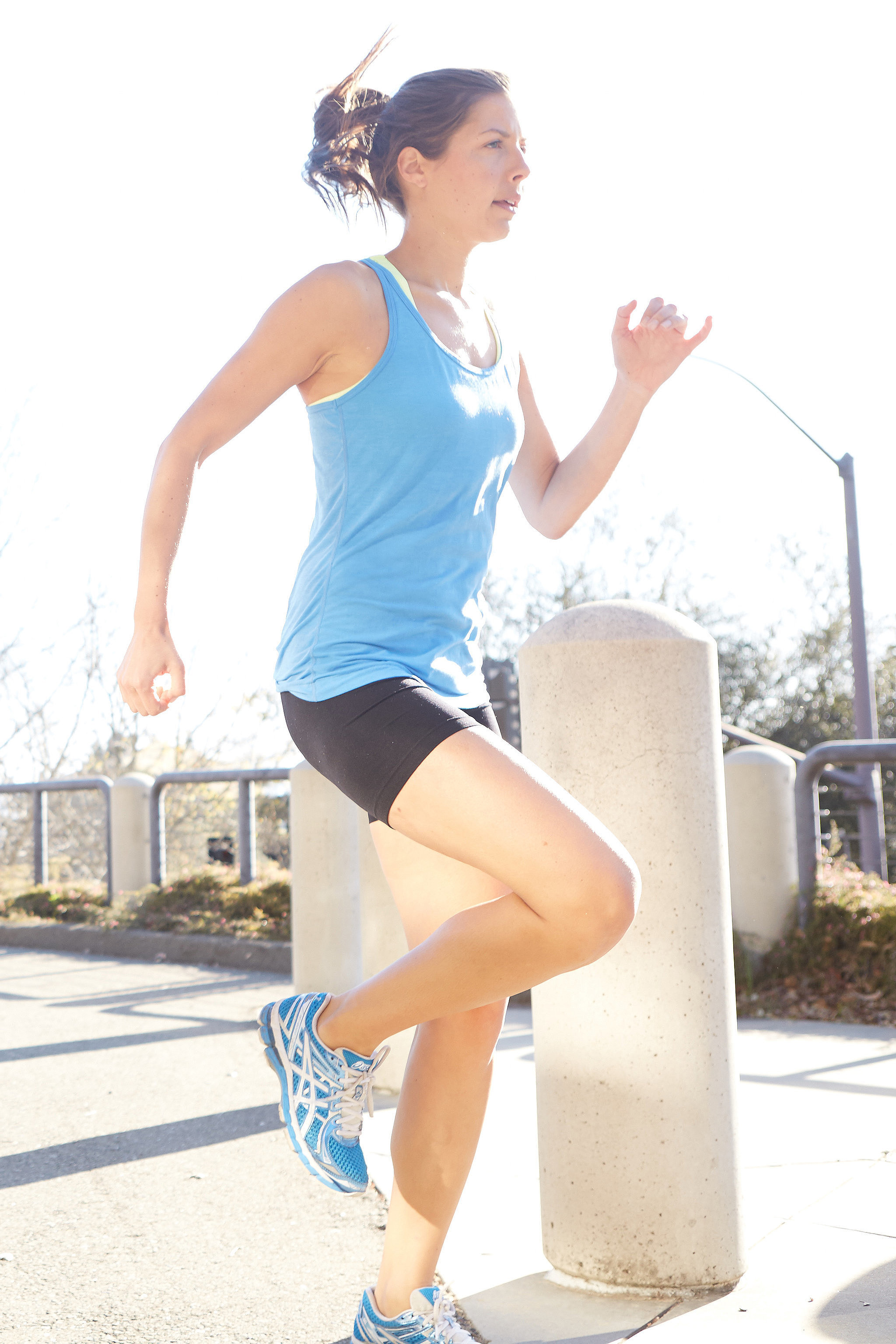
Even if you exercise regularly, you’ve felt it: the aching, can’t-sit-down-or-lift-my-arm muscle soreness the next day after a workout. That pain you feel a day or two after an intense workout is known as DOMS, or delayed onset muscle soreness, and is caused by muscle microtearing, which helps build muscle fiber and make them stronger. As easy as it may be to use muscle soreness as a reason to skip your next-day workout (guilty as charged!), DOMS is rarely a good excuse to bypass the gym. Here’s what you should be doing instead.
- Don’t premedicate. “Don’t mask what your body is telling you,” says Crunch trainer Tim Rich. He advises clients to not take painkillers before a workout so they can understand how their body reacts to a workout. Taking Advil before your workout could, for example, cause you to push yourself farther than you should go or mask an injury until it’s too late. If you’re experiencing DOMS after a workout, however, an NSAID or other anti-inflammatory OTC painkiller and icing where you hurt can help.
- Assess the pain. It’s one thing to have DOMS, which is a good thing. But if you finish a workout and feel like you are uncharacteristically sore, or that you’ve injured yourself, pushing through the pain may not be the best thing. “If you’re new to working out, aches and pains are normal,” says running coach Eric Chen. However, when workout pain feels more like a burning sensation, it “automatically means stop right there and rest.” In addition, Eric recommends seeking out professional advice if you experience an abnormal pain that reoccurs when you exercise again. Make sure you pay attention the difference between an injury pain and normal muscle soreness, and stop and rest if you feel like you’ve strained something.
- Eat protein. Muscles are made out of protein, so to shorten the time it takes muscles to heal, try to eat some sort of protein right after you exercise — this will also help you build more muscle over time. Studies have found that recovery drinks that contain protein help decrease muscle soreness compared to normal carbohydrate-based sports drinks.
- Alternate workouts. Being too sore to work out may be a popular excuse, but it’s not always a good one. If you’re nursing sore legs from a rigorous hike, spend the next day working on your abs or arms. Allowing an overworked part of your body time to rest while working on another is a great way to optimize your time and ensure that you stay on track. You can also opt for another aerobic exercise or yoga — cardio and stretching can both help soothe your muscles.
No matter how you deal with muscle soreness, it shouldn’t last forever. Go see a doctor if you find that your soreness isn’t getting any better.
Image Source: POPSUGAR Photography / Ericka McConnell
POPSUGAR, the #1 independent media and technology company for women. Where more than 75 million women go for original, inspirational content that feeds their passions and interests.
Source: Should You Exercise When You Are Sore? : PopSugar




